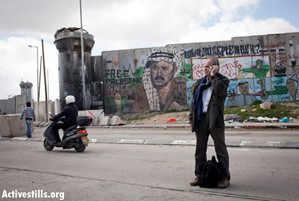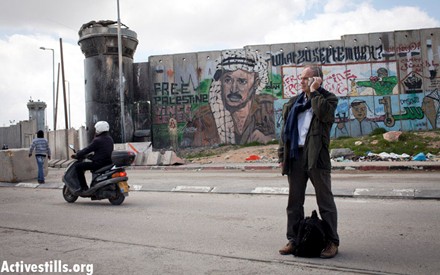
Social activists prepare for a second round of protests this summer, and Hadash and Communist Party of Israel militants are demanding that the occupation of Palestinian territories and the struggle for a just peace be re-introduced to the debate over the economy and society in Israel.
In a report released this week, “The Cost of the Occupation,” Dr. Shlomo Swirski of the Adva Center spells out the countless ways in which the occupation has damaged the Israeli society, drawing a direct relationship between massive national spending on security and the increasingly unaffordable costs of rent and daycare. In fact, the report shows that unless there is a political solution to the conflict, Israel will continue to be plagued with increasing income inequality and education gaps more fitting for a third world country

How much has the occupation actually cost? The report points out that it’s impossible to say for sure, because most of the military allocations in the defense budget are kept secret, including the cost of command centers, the use of special forces, and the extensive deployment of reserve units. But there is one helpful figure published every year; the total supplements allocated to the Ministry of Defense specifically for military activity in the Palestinian territories. From the end of the first Intifada (Palestinian popular uprising) in 1989 until 2010, this figure totaled approximately NIS 48 billion (or USD $12.4 billion).
Yet even this number demonstrates only a fraction of the true cost of Israel’s occupation. The report details how time and again, economic slumps triggered by outside events are prolonged by the conflict (for example, the 2000 hi-tech crash was extended by the Second Intifada, and the 2008 capitalist crisis was reinforced by Operation Cast Lead). Potential growth has been extraordinarily stunted. Professor Zvi Eckstein, former Bank of Israel Deputy Governor, is quoted estimating a loss of 0.25 to 0.75 additional percentage points of economic growth a year. And then there is the slashing of social expenditures in the budget, which during the second Intifada totaled NIS 65 billion, while the defense budget increased by NIS 15 billion. Cuts to child allowances and unemployment pay have caused a consistent rise in the poverty rate, and government income transfers designed to combat it make an even smaller dent in poverty now than they did in the 1980s.
According to Hadash and CPI, if the social protest movement is serious about change, it needs to talk about the occupation. On next Monday, June 4 ,at 18:00 the Adva Center will be hosting a panel discussion, in Hebrew, at the ZOA House. Ibn Gvirol 26 in Tel Aviv with the report’s author Dr. Swirski, Professor Yossi Yona of Ben Gurion University – a leading member of the academic committee established by the social protest, journalist Meirav Michaeli (Haaretz), Colonel (R) Shaul Arieli and social protest leader Alon-Lee Green. The discussion is called “What is the Cost? The Social Protest and the Israeli-Palestinian Conflict.”


